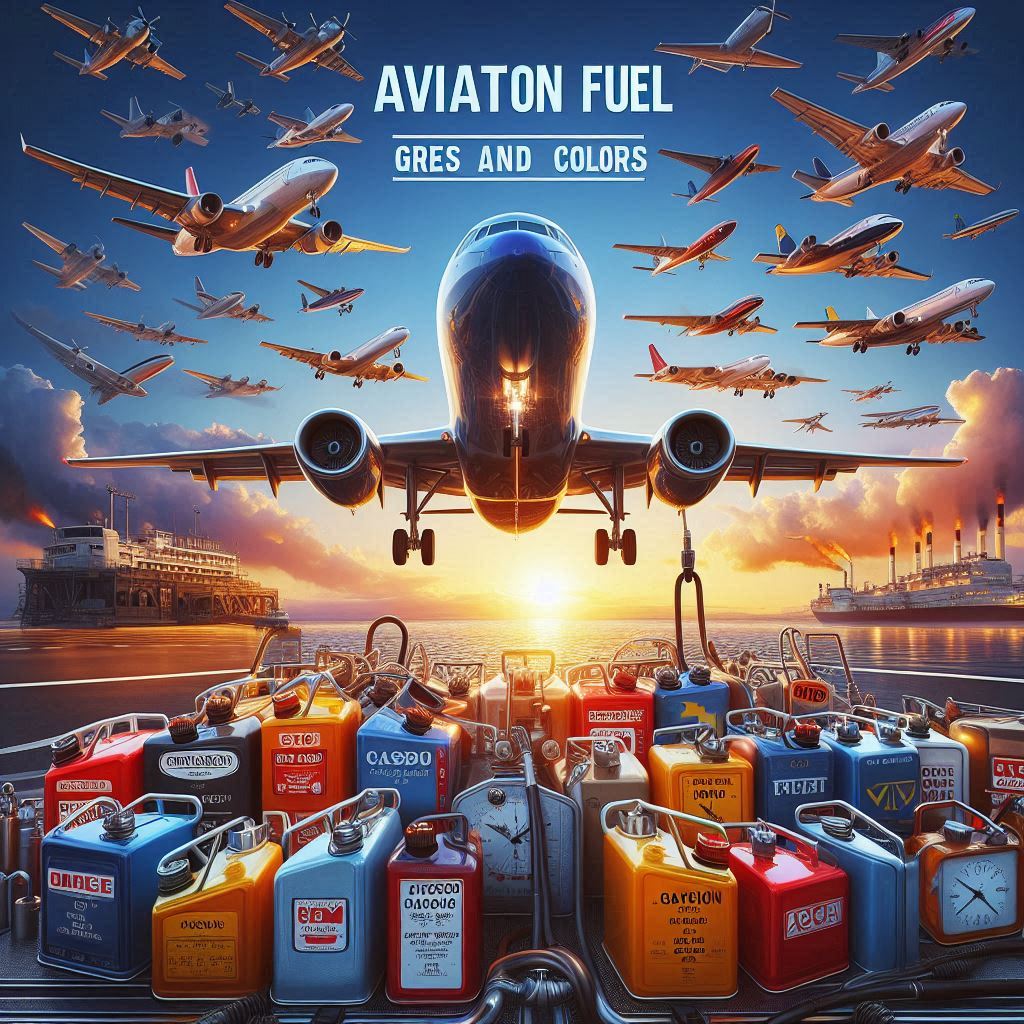
Aviation fuel grades and colors
This article, aviation fuel grades and colors, will investigate the many grades of aviation gasoline as well as the colors that correspond to those grades in order to provide a comprehensive grasp of this vital component of aviation.
Aviation fuel is an essential component of the aviation business, and there are a variety of grades available to cater to the needs of various aircraft. Important safety and identifying needs are served by the color coding of aviation fuel, such as the blue hue of 100LL and the colorlessness of Jet-A and Jet-A1. These color codes assist avoid potentially hazardous events of misfuelling and guarantee that the correct kind of fuel is used in the aircraft that is designed to utilize it.
To ensure the continued security and dependability of aviation operations, it is imperative that all workers, including pilots, ground crews, and maintenance staff, adhere scrupulously to the color codes. Although the different colors of aviation gasoline may seem like a little point, they really play a crucial part in preventing accidents that might endanger the lives of those who rely on air travel.
Aviation fuel is an essential component of the aviation business, serving as the source of propulsion for a wide variety of aircraft, ranging from light, propeller-driven aircraft to big, passenger-carrying jets. Aviation fuels are particularly manufactured to fulfill the stringent needs of aircraft engines. This ensures the highest levels of safety, performance, and efficiency while the aircraft is in the air.
Introduction:
Aviation fuel, sometimes referred to as aviation gasoline or simply "avgas," is a specialized kind of fuel that was developed especially for use in airplanes. Its common name is "aviation fuel." In terms of its composition, qualities, and the performance characteristics it offers, it is distinct from both gasoline and diesel fuel used in automobiles. Both 100LL (also known as Low Lead) and Jet-A (also known as Jet-A1) are the two primary types of aviation fuel that are used by the aviation industry. These fuels are color-coded so that they may be distinguished from one another, and so that the correct kind can be used in the proper aircraft.
Different types of aviation fuel include:
This kind of aviation fuel, commonly known as 100LL (Low Lead), is often put to use in aircraft that are powered by piston engines and fall under the category of general aviation aircraft. Tetraethyl lead, which is present in very small amounts in the product, functions as an octane enhancer. The number "100" in the product's name is a reference to the fuel's octane rating. In high-performance aircraft engines, the inclusion of lead helps minimize knocking and gives the high-octane rating that is necessary. The 100LL has a blue coloring.
Jet-A and Jet-A1: Jet-A is a kind of aviation fuel that is derived from kerosene and is used in turbine or jet engines. Additionally, it is the common jet fuel that is used in the United States as well as a great number of other nations. Jet-A1 is a grade that is very similar to Jet-A, although it has some tiny differences in the standards and is mostly used in Europe in addition to certain other places. Both Jet-A and Jet-A1 have a colorless to straw-colored appearance, which gives the impression that they are almost transparent.
Coding via Color:
There are many reasons why aviation fuel is color-coded, but the most important ones are for safety and to make it easier to identify.
Misfuelling is a potentially catastrophic mistake that may occur when the incorrect kind of fuel is put into an airplane. Color coding helps avoid this error, which can assist ensure everyone's safety. Incorrect fueling may cause damage or failure to the engine, putting the lives of all on board at jeopardy. The clear distinction between the hues serves as a visual indication for both the pilots and the ground crew, therefore lowering the risk of making a mistake.
Identification: The use of color coding makes it simpler for pilots, fueling crews, and maintenance people to identify the kind of gasoline that is being used in a more expedient manner. This not only speeds up the process of refueling the airplane but also guarantees that the correct fuel is placed into it.
100LL, often known as Low Lead:
As was just said, blue coloring is added to 100LL. During the refining process, a blue dye is added to the gasoline, which ultimately results in the fuel taking on a blue tint. Not only can this dye be seen in the fuel itself, but it may also be seen in the residue that is left behind if a sample is obtained and examined. This guarantees that 100LL can be distinguished from the many other kinds of aviation gasoline in a straightforward manner.
Jet-A as well as Jet-A1:
Jet-A and Jet-A1 often have a hue that is between virtually transparent to a straw yellow. These fuels seem colorless because they are mostly composed of kerosene, which has a hue that is similar to that of light gasoline. It is a universal requirement that jet fuel should be free of any artificial colors; this helps to ensure that the product is free of contamination and stays consistent.
https://www.novintrades.com/product-details/24226?title=Jet-Fuel

